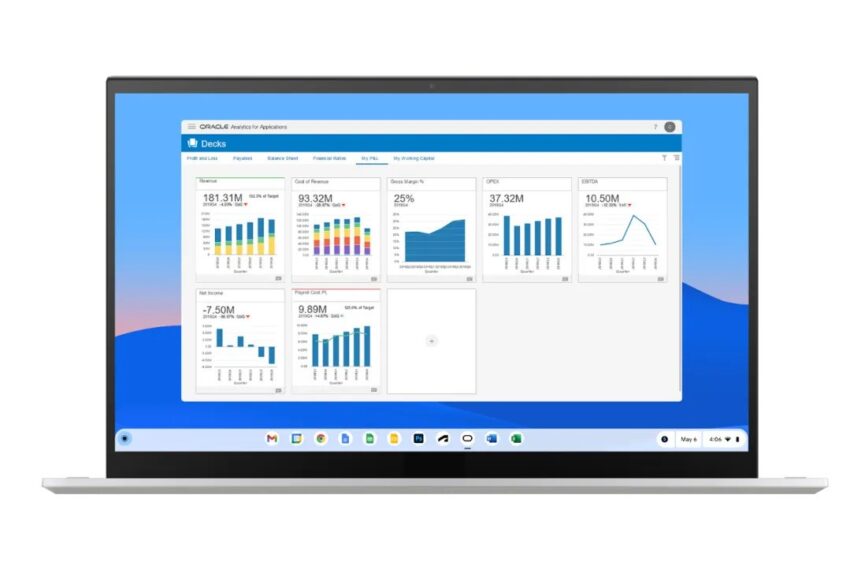
google relaunches cameyo to entice businesses from Google has taken a significant step in enhancing its ChromeOS ecosystem by relaunching Cameyo, a virtualization software aimed at facilitating the transition for businesses still reliant on Windows applications.
google relaunches cameyo to entice businesses from
Background on Cameyo and Its Acquisition
In 2024, Google acquired Cameyo, a company specializing in virtualization solutions that enable users to run Windows applications in a cloud environment. This acquisition was part of Google’s broader strategy to strengthen its position in the enterprise market, particularly as organizations increasingly seek to adopt cloud-based solutions. Cameyo’s technology allows businesses to access legacy applications without the need for traditional desktop environments, which can be cumbersome and costly to maintain.
The relaunch of Cameyo as “Cameyo by Google” marks a pivotal moment for enterprises considering a shift to ChromeOS. Historically, one of the primary barriers to adopting ChromeOS in enterprise environments has been the reliance on specific Windows applications. Many organizations have been hesitant to make the switch due to the so-called “app gap,” which refers to the limited availability of essential Windows applications on ChromeOS. With this new offering, Google aims to address that gap effectively.
The Features of Cameyo by Google
Cameyo by Google introduces a Virtual App Delivery (VAD) solution that allows users to run legacy Windows applications directly in the Chrome browser or as standalone web apps. This functionality is particularly beneficial for businesses that rely on specific software tools, such as Microsoft Excel, AutoCAD, or other industry-specific applications. The ability to run these applications alongside Chrome and other web apps provides a seamless user experience, allowing employees to utilize a hybrid approach to their work.
Key Advantages of Cameyo by Google
- Streamlined Access: Users can access only the applications they need, rather than virtualizing an entire desktop environment. This targeted approach minimizes resource consumption and enhances performance.
- Cost Efficiency: By reducing the need for expensive Windows hardware and licenses, organizations can save significantly on IT costs. Chromebooks are generally more affordable than their Windows counterparts, making them an attractive option for businesses.
- Enhanced Collaboration: The integration of Windows applications with web-based tools fosters a more collaborative work environment. Teams can easily share data and work on projects without being limited by the operating system.
- Flexibility: Organizations can maintain their existing workflows while transitioning to a more modern, cloud-based productivity suite. This flexibility is crucial for businesses that require specialized software but also want to leverage the benefits of ChromeOS.
Implications for Businesses
The relaunch of Cameyo by Google is not just a technical enhancement; it represents a strategic shift in how businesses can approach their IT infrastructure. By enabling organizations to run essential Windows applications on ChromeOS, Google is positioning itself as a viable alternative to traditional Windows environments.
For many organizations, the decision to switch to ChromeOS will depend on several factors, including the specific applications they rely on, the cost of hardware, and the overall IT strategy. The introduction of Cameyo could tip the scales in favor of ChromeOS for businesses that have been hesitant to make the switch due to application compatibility concerns.
Market Dynamics
The enterprise market has been dominated by Microsoft for decades, with Windows being the operating system of choice for most organizations. However, as cloud computing continues to gain traction, the landscape is shifting. Companies are increasingly looking for solutions that offer flexibility, scalability, and cost-effectiveness. Google’s efforts to enhance ChromeOS with solutions like Cameyo are indicative of this trend.
According to recent statistics, the number of ChromeOS users remains significantly lower than that of Windows users. However, the growing adoption of cloud-based applications and services is changing this dynamic. As more businesses migrate to the cloud, the relevance of traditional operating systems may diminish. Google’s strategy with Cameyo is to accelerate this transition by providing a bridge for organizations still reliant on legacy applications.
Stakeholder Reactions
The response from industry stakeholders has been largely positive. Many IT leaders and decision-makers recognize the potential of Cameyo by Google to simplify the transition to ChromeOS. The ability to run Windows applications in a cloud environment is seen as a game-changer for organizations that have been hesitant to adopt ChromeOS due to application compatibility issues.
However, some skepticism remains. Critics argue that while Cameyo offers a solution for running legacy applications, it may not fully replicate the performance and functionality of a native Windows environment. Organizations with complex IT needs or specialized software may still find challenges in making the switch. As such, the success of Cameyo will depend on how well it can meet the diverse needs of various industries.
Future Outlook
Looking ahead, the future of Cameyo by Google appears promising. As more businesses embrace digital transformation, the demand for flexible and efficient IT solutions will continue to grow. Google’s investment in Cameyo aligns with its broader strategy to enhance the ChromeOS ecosystem and attract more enterprise users.
Moreover, the ongoing development of cloud-based applications is likely to further diminish the reliance on traditional operating systems. As organizations increasingly adopt hybrid work models, the need for versatile and accessible solutions will become even more critical. Google’s efforts to bridge the gap between Windows applications and ChromeOS could position it favorably in this evolving landscape.
Conclusion
The relaunch of Cameyo by Google represents a significant advancement in the ChromeOS ecosystem, particularly for businesses still dependent on Windows applications. By offering a Virtual App Delivery solution that enables users to run legacy software in the Chrome browser, Google is addressing one of the primary barriers to adopting ChromeOS in enterprise environments.
As organizations continue to navigate the complexities of digital transformation, the ability to seamlessly integrate Windows applications with cloud-based tools will be invaluable. The implications of this development extend beyond mere technical enhancements; they signal a shift in how businesses can approach their IT infrastructure and operational strategies.
While challenges remain, particularly for organizations with specialized software needs, the potential benefits of adopting ChromeOS with Cameyo are compelling. As the market dynamics evolve and more businesses seek flexible, cost-effective solutions, Google’s investment in Cameyo may prove to be a pivotal move in reshaping the enterprise landscape.
Source: Original report
Was this helpful?
Last Modified: November 12, 2025 at 7:40 pm
1 views















